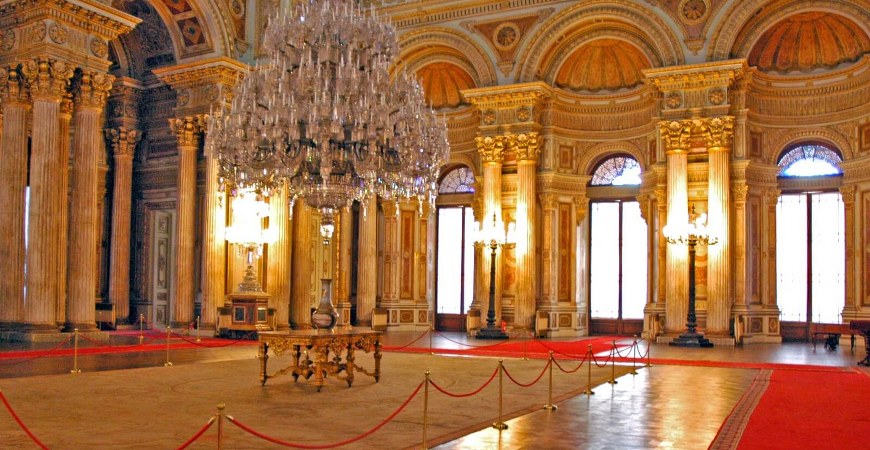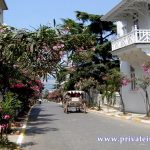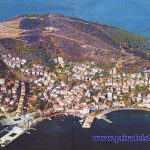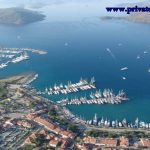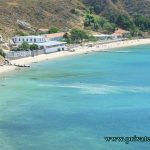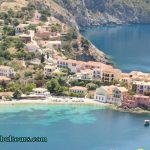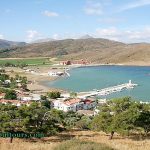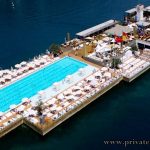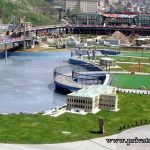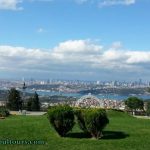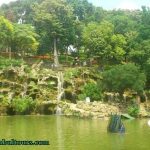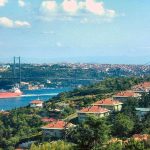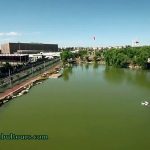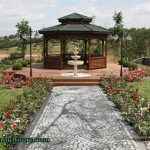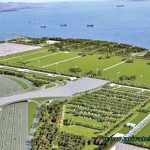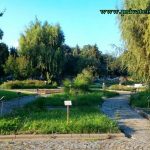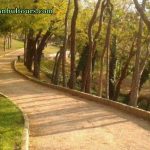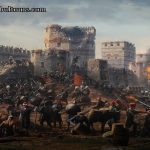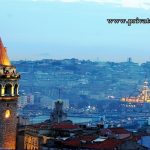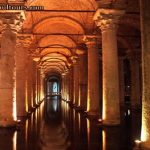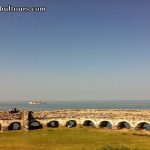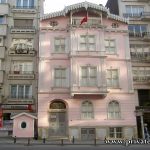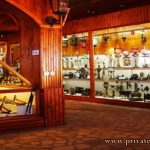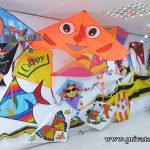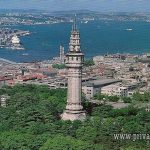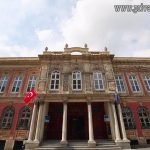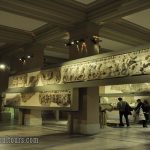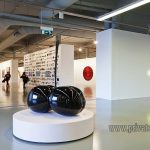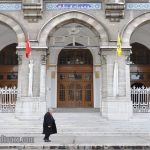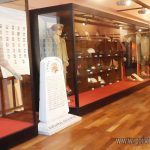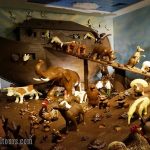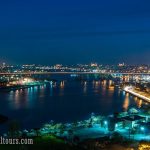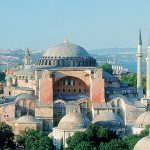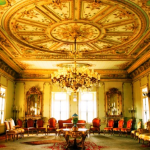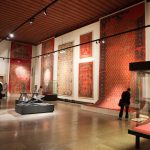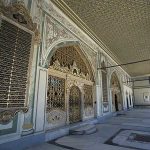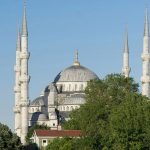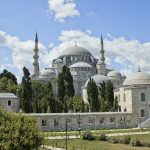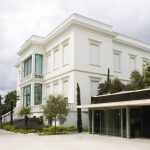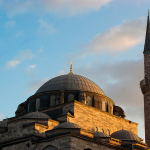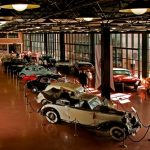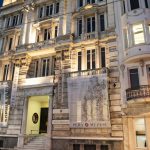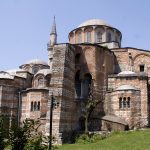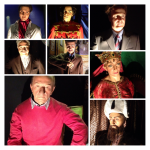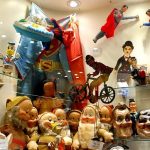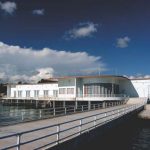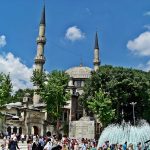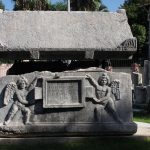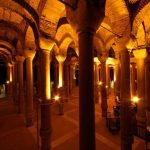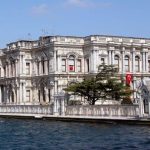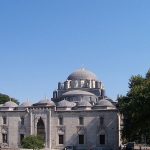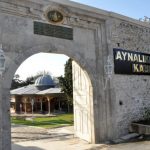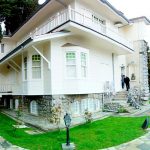Dolmabahce Palace Museum in Istanbul,
The construction and decoration of the palace cost close to 4 million pieces of gold, it is highly embellished and baroque in style. Abdulmecid found this palace too luxurious and could never refrain from commenting to men of state who visited him: This palace is much too ornate. A plainer style would have been better.
Under European influence, Dolmabahce Palace was built as a mixture of Renaissance and Baroque styles. A 600 m. long marble quay was built on the sea side of the palace, and high walls on the inland side. There are two highly decorated large gates opposite the Dolmabahce Mosque which lead to the palace garden, from which a wide flight of stairs leads to the first floor of the selamlik (apartments reserved for men). The main building in the center is the Muayyede Salon where official ceremonies and celebrations were held. The four and a half ton crystal chandelier of 750 candles which hangs in this ornate room were a present from Queen Victoria of England. To the north of the Muayyede Salon is the Imperial Apartment and the Harem, consisting of 17 large salons and 20) rooms, each individually decorated and furnished. Dolmabahce Palace resembles an art museum with oil paintings in the salons, chandeliers, porcelain etc.
Dolmabahce Palace was the scene of many historical events. Many great foreign statesmen were entertained here and received hospitality, among them the Austrian Emperor Karl, the Empress Eugenie, King Edward VII of England, Emperor Wilhelm II of Germany, Russian Grand Duke Nikola, and Shah Muzafferuddin Shah of Iran. After Abdulmecid, Sultan Abdulaziz, Murad V, Mehmed Resad V, and Vahdeddin lived in this palace. Abdulhamid II lived there for a short while and then moved to Yildiz Palace (Star Palace).
Please note that Dolmabahce Palace Museum is close on Monday and Thursday. You can visit the museum from 09.00 to 17.00. Also, Private Istanbul Tours have Istanbul daily excursions every day and some of them included Istanbul Dolmabahce Palace Museum.
You will continue to find more details about the Dolmabahce Palace Museum of Istanbul in Chapter 3.

